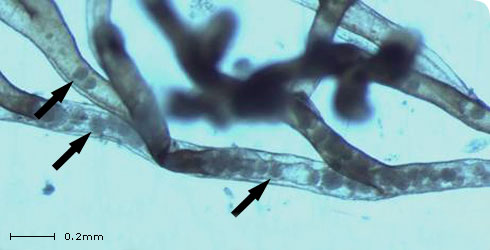Tetracapsuloides bryosalmonae
The myxozoan, Tetracapsuloides bryosalmonae, is a multicellular endoparasite of freshwater bryozoans and salmonid fish.
Tetracapsuloides bryosalmonae causes the devastating Proliferative Kidney Disease in trout and salmon (Anderson et al. 1999; Canning et al. 1999; Feist et al. 2001), resulting in significant economic losses for aquaculture and threatening wild fish populations.
Species detail
- Sac-like stages consist of an outer and inner epithelial tissue layer.
- Cell doublets and pseudoplasmodial stages develop in fish kidney.
- Spores consist of valve cells that form the spore wall, capsulogenic cells that produce polar capsules, and infective sporoplasm cells.
- Polar capsules are intracellular organelles in spores of all myxozoans and which share a common ancestry with nematocysts found in the stinging cells of cnidarians.
-

Taxonomy
Discover more about the appearance and features of Tetracapsuloides bryosalmonae and learn about similar looking species.
-

Distribution
Discover the areas of the world that Tetracapsuloides bryosalmonae causes proliferative kidney disease in trout and salmon. Learn about the feeding patterns of the species.
-

Biology
While little is currently known about the biology of Tetracapsuloides bryosalmonae, find out about its size, growth patterns and life expectancy.
-

References
Get reference material for Tetracapsuloides bryosalmonae.
Images
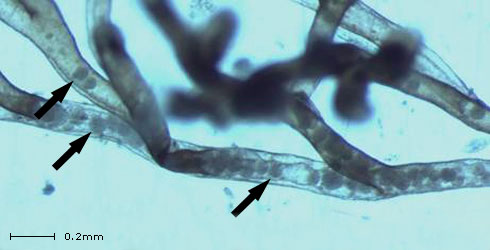
Sac-like stages of T. bryosalmonae inside a bryozoan host (image by Sylvie Tops).
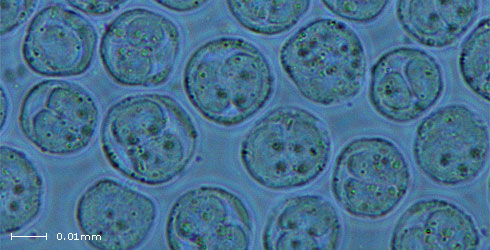
Each spore contains two sporoplasms (spores approx. 18µm in diameter)
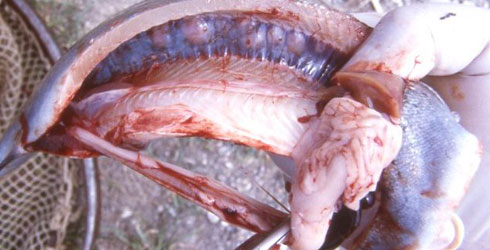
Proliferative kidney disease causes swelling of the kidney.
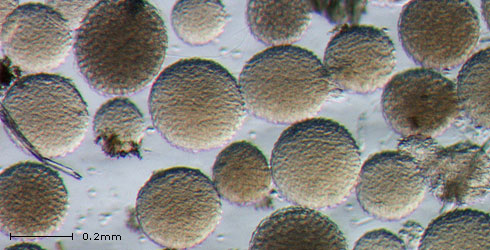
T. bryosalmonae sacs isolated from bryozoans.

Tetracapsuloides bryosalmonae
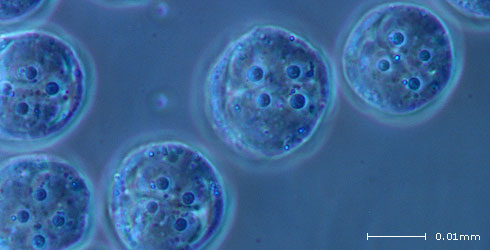
Spores showing 4 polar capsules (spores approx. 18µm in diameter).
Note
This classification is the one that is best supported but the myxozoans have not formally been recognised as cnidarians.
Author
Hanna Hartikainen
Bryozoa Research Assistant, Department of Zoology.
